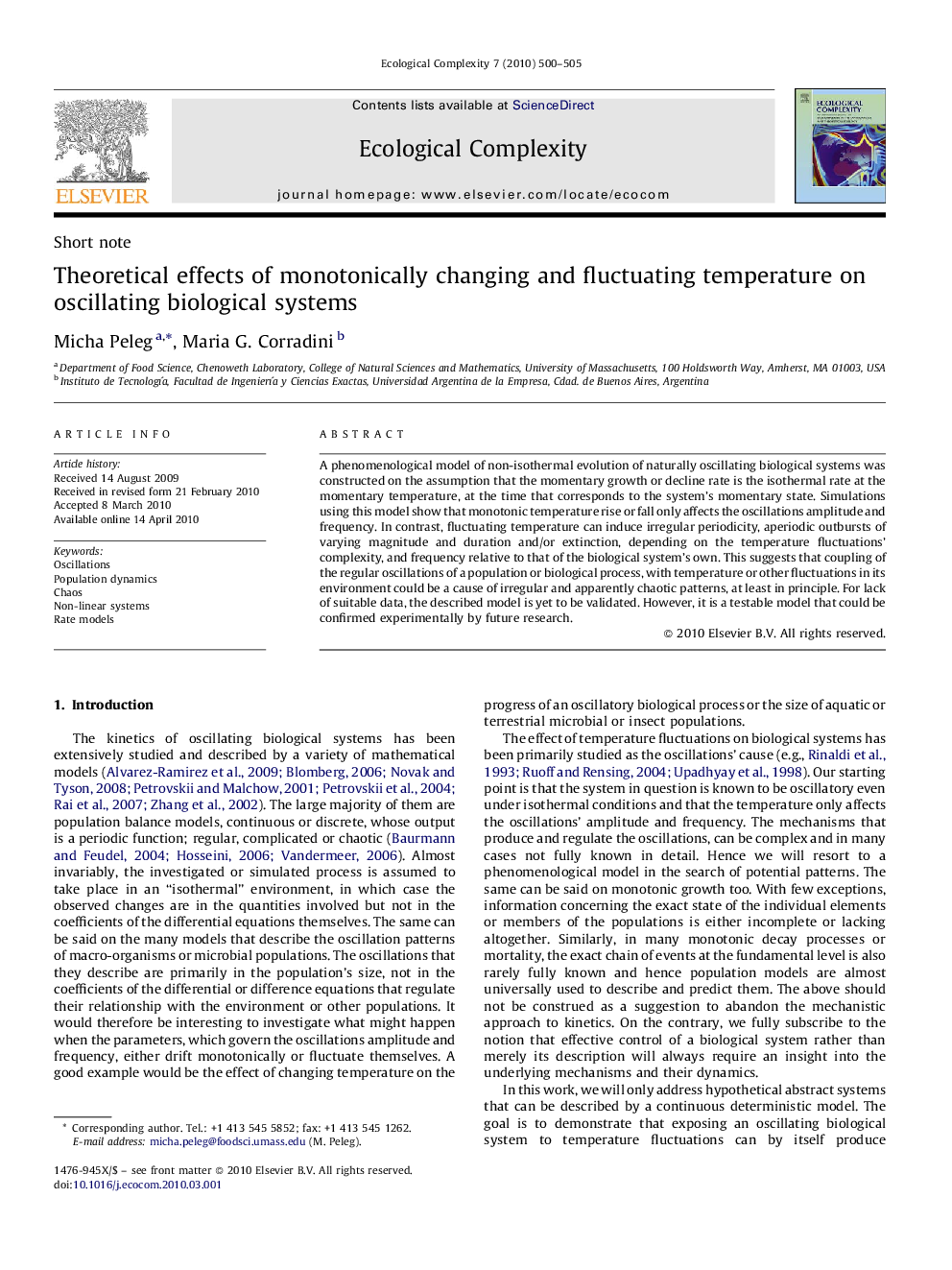| Article ID | Journal | Published Year | Pages | File Type |
|---|---|---|---|---|
| 4372587 | Ecological Complexity | 2010 | 6 Pages |
A phenomenological model of non-isothermal evolution of naturally oscillating biological systems was constructed on the assumption that the momentary growth or decline rate is the isothermal rate at the momentary temperature, at the time that corresponds to the system's momentary state. Simulations using this model show that monotonic temperature rise or fall only affects the oscillations amplitude and frequency. In contrast, fluctuating temperature can induce irregular periodicity, aperiodic outbursts of varying magnitude and duration and/or extinction, depending on the temperature fluctuations’ complexity, and frequency relative to that of the biological system's own. This suggests that coupling of the regular oscillations of a population or biological process, with temperature or other fluctuations in its environment could be a cause of irregular and apparently chaotic patterns, at least in principle. For lack of suitable data, the described model is yet to be validated. However, it is a testable model that could be confirmed experimentally by future research.
